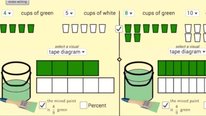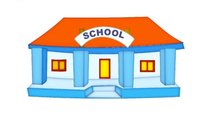- Brittany Webre
- http://www.math.txstate.edu/people/grad-students/webre.html
- Doctoral Research/Instructional Assistant
- Mathematics Instruction for English Language Learners
- http://www.math.txstate.edu/career/
- Texas State University
- Nariman Ahmed
- Doctoral Graduate Assistant
- Mathematics Instruction for English Language Learners
- http://www.math.txstate.edu/career/
- Texas State University
- Rachel Bower
- http://www.math.txstate.edu/people/grad-students/bower.html
- Doctoral Research Assistant
- Mathematics Instruction for English Language Learners
- http://www.math.txstate.edu/career/
- Texas State University
- Christine Herrera
- Graduate Student
- Mathematics Instruction for English Language Learners
- http://www.math.txstate.edu/career/
- Texas State University
- Meagan Hoff
- Graduate Student
- Mathematics Instruction for English Language Learners
- http://www.math.txstate.edu/career/
- Texas State University
- Alexander Rasche
- Doctoral Teaching Assistant
- Mathematics Instruction for English Language Learners
- http://www.math.txstate.edu/career/
- Texas State University
- Shawnda Smith
- Graduate Student
- Mathematics Instruction for English Language Learners
- http://www.math.txstate.edu/career/
- Texas State University
- M. Alejandra Sorto
- Associate Professor
- Mathematics Instruction for English Language Learners
- http://www.math.txstate.edu/career/
- Texas State University
- Christina Starkey
- Doctoral Teaching Assistant
- Mathematics Instruction for English Language Learners
- http://www.math.txstate.edu/career/
- Texas State University
- Matthew Straughn
- Doctoral Instructional Assistant
- Mathematics Instruction for English Language Learners
- http://www.math.txstate.edu/career/
- Texas State University
Public Discussion
Continue the discussion of this presentation on the Multiplex. Go to Multiplex
















M. Alejandra Sorto
Associate Professor
Based on your experience teaching in linguistically diverse classrooms, what are other teaching strategies that promote student success besides the ones mentioned in the video?
E Paul Goldenberg
Distinguished Scholar
This is very important work, especially as we have increasing /numbers/ of ELL students, but also because so much of “conventional” (publisher) ELL adaptations mistakes /language/ issues for /cognitive/ issues, simplifying content rather than clarifying language.
Also, because mathematical conversations require special clarity and precision, well beyond casual conversation, your work has implications even for understanding how best to communicate to native speakers of English.
So, in either realm, I’m curious to know what findings (if any) you would consider “surprises” or unexpected ideas for intervention. Are there understandable guides you might you use for/publishers/ as they write ELL inserts for teachers?
Rachel Bower
Doctoral Research Assistant
If you are interested in guides that are already in publication I like “Beyond Good Teaching: Advancing Mathematics Education for ELLs” by Celedon-Pattichis and Ramirez. Chapter 2 in particular would be quite useful for other publishers and teachers.
E Paul Goldenberg
Distinguished Scholar
Thanks, Rachel. I’m eager to take a look. I was really surprised (though I suppose I shouldn’t have been) the first time I saw how the “three levels” of ELL proficiency were treated by one publisher, whose notes to teachers seemed to miss totally that the issue was about English language knowledge, not cognitive deficit or other mathematical conceptual weakness.
M. Alejandra Sorto
Associate Professor
Thanks Paul for your thoughtful comment and interesting questions.
One of the surprising findings is that simple changes in the classroom can make a huge difference for ELLs. For example, wait time for content exposed at the board or sending students to the board. We think that by the end of the project, we will definitely have guides that can serve as inserts for teachers. For example, infer what the student is trying to communicate by their written work, gestures, and context of the mathematical task. We also have a list of words that are problematic for Spanish speakers and a discussion of their meaning is recommended such as the word “edge” – not a cognate, students create or construct its meaning depending on what they see/touch and sometimes is not the correct meaning.
E Paul Goldenberg
Distinguished Scholar
As I was reading “gestures” here, another thought occurred to me. I’ve been noticing in classrooms that have projection equipment (overhead projectors, Elmo devices, and even smart boards) the teachers are no longer quite as visibly “in the picture” as when they are drawing on a board with their own hands. Their gestures are smaller, and not where the students’ eyes are. I wonder if this will wind up doing exactly the opposite of what we’d want, especially since gestures (even the “inarticulate” ones that just serve to punctuate our speech) seem so important and natural in communication. What do you think?
M. Alejandra Sorto
Associate Professor
Thanks Paul again for your comment and contribution to the discussion. We observed in our study that the use of projection equipment was combined with the use of gestures (pointing at a picture or object, covering/uncovering essential pieces, tracing graphs, etc.) and most of their practices with the equipment was combined with class discussion where students used their hands or their work to communicate. So, I think it is more how the equipment is used rather than the equipment itself. Having said that, when using the projected materials, there is less wait time for exposure to the content. This limits the access to students that are developing academic language.
E Paul Goldenberg
Distinguished Scholar
Oh, wow! I wasn’t expecting the reduced wait time! Why do you think /that/ is happening? Intriguing.
I definitely believe (about all equipment) that it’s how people use it, not the technology, but it also (happily) sounds like the teachers you were observing were more mobile than some that I’ve observed. Perhaps that’s because they were already attending to maximizing the clarity of communication?
M. Alejandra Sorto
Associate Professor
You are absolutely right Paul! The teachers observed were in a large district south of the border and they are very aware of the importance of developing literacy skills at the same time they teach the mathematical content. They strategies vary but they all have as a policy (and beliefs) to integrate language development by having students read, speak, listen, and write.
E Paul Goldenberg
Distinguished Scholar
And what caused the reduced wait time? Do you know?
Alexander White
Very important project!
M. Alejandra Sorto
Associate Professor
Thank you Alex! We appreciate your support and advise.
Jorge Solis
Thank you for sharing this work with us! We’re living in time now where teachers are constantly bombarded with new efforts to change their teaching particularly with ELLs in STEM. This can present some challenges for researchers because it requires that we re-teach or distinguish our reform efforts with what appears as familiar, “done that” kind of thinking by teachers. I was wondering if you came across these challenges as you presented your PD with teachers?
Rachel Bower
Doctoral Research Assistant
Hi Jorge. I am a research assistant with this project and I have also taught K-12. I believe that much of what this project has uncovered can be implemented in the classroom with little difficulty. Things like connecting the mathematics with students’ life experiences, leaving information on the board longer, and discussing students’ work are all helpful for ELLs and, I think, native English speakers. Teachers just need to be aware, thus the PD, of the fact that these techniques have shown themselves to be beneficial.
M. Alejandra Sorto
Associate Professor
Thank you Jorge for your comment and question. The PD aspect of the project was more us (the research team) learning from them. We presented the teachers with rich mathematical tasks and give them space to talk about how would they implement such tasks in their linguistically diverse classroom without lowering the cognitive demand. Many of them shared their knowledge of literacy development strategies integrated with the mathematics strategies. Then, we were able to actually see them in action when we videotaped their lessons. Now that the project is finishing and have some results, we are in the position to develop PD for other teachers and we will probably be challenged by your comment. We definitely need to be ready for that as we move forward!
Jorge Solis
Thank you Rachel and Alejandra. I’m also constantly learning from classroom teachers about my own practices and thinking as I engage them on MKT and KT-ELLs (i like your visual!). Part of the challenge for K-6 teachers of ELLs has to do with re-learning second-language and bilingual strategies so that they are more authentic and content-driven. Its a real shifting in approach.
Beth Bos
This study is needed. Excellent video
M. Alejandra Sorto
Associate Professor
Thank you Beth for your contribution and support!
Courtney Arthur
I am curious how dependent your findings were based on grade level? I would imagine that things such as wait time or sending students to the board could be more beneficial at certain grade levels? Is this true and are there parameters to your findings?
Courtney Arthur
I am curious how dependent your findings were based on grade level? I would imagine that things such as wait time or sending students to the board could be more beneficial at certain grade levels? Is this true and are there parameters to your findings?
M. Alejandra Sorto
Associate Professor
Hi Courtney! Thank you for your question. Our findings do not account for differences among grades, unfortunately our sample was not big enough per grade level. We had 34 teachers more less evenly distributive among 6, 7, and 8 grade. I think your question is very important to address and we can consider it in the future with bigger sample size.
Miriam Gates
Researcher
Really interesting and important work. The list of factors accounting for differences was really enlightening. I’m curious what kinds of classroom practices promoted each of these factors. That is, was it more important that students had access to visual supports during independent work time or the lesson launch? Did teachers who provided a list of essential words at the beginning of the class day have better student outcomes or was it more beneficial for these to be interleaved throughout the lesson? If this level of analysis has not been done, are there plans to do something along these lines?
M. Alejandra Sorto
Associate Professor
Thank you for your questions Miriam! We tested these factors by creating an observational scale consisting of the different elements (6) and then an overall score. We have conducted the analysis using the overall score (since we have acceptable inter-rater reliability of about .8). Hence we do not know which one of these elements in particular is accounting for the variation of student achievement. We are planning on conducting exploratory on the individual elements to formulate the kind of questions/hypothesis that you suggest now that we know that they do matter. Thank you so much for the interest, we are very excited to continue our work and contribute to the advancement of knowledge in this area – you are helping us by posting very good questions!!!
Jose Honduras
Hola a todos,
Interesante!…. creo que para los mas pequeños jugar es importante, las actividades en el aula deberían girar en torno a esto. También la habilidad del docente para identificar y capacitar “tutores” dentro del aula para trabajar al lado de los estudiantes que necesitan acompañamiento.
Éxitos!
M. Alejandra Sorto
Associate Professor
Gracias Jose por tu comentario! En nuestras observaciones de aula vimos una gran variedad de estrategias de enseñanza y en los grados sexto y septimo habían bastantes actividades de “juego” con materiales concretos y mucha actividad. Tambien hemos observado en algunas aulas de otros distritos escolares (no del que participo en esta investigación) el modelo de tutores y los estudiantes se sienten acompañados y apoyados en su aprendizaje. Ese factor no fue tomado en cuenta, pero lo incluiremos en futuros proyectos de investigación! Saludos a todos los hondureños educadores!!!
Gerald Kulm
Hi Alejandra, Congrats on the project.
M. Alejandra Sorto
Associate Professor
Thank you so much Gerald. We miss you here in San Marcos – always welcome to check out our projects.
Further posting is closed as the showcase has ended.